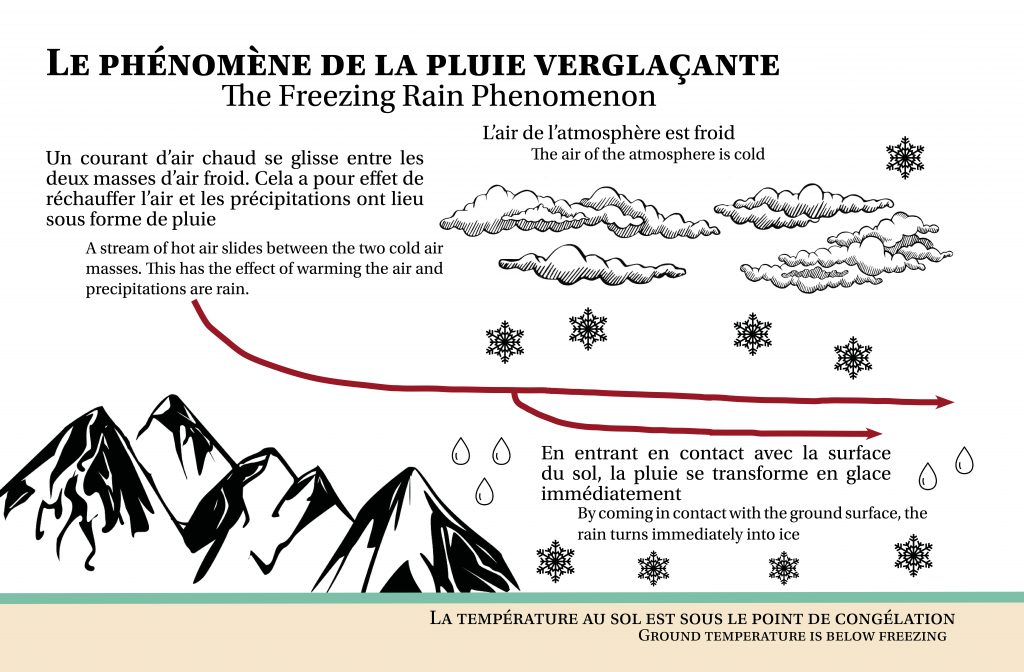How does freezing rain form?
Freezing rain is a meteorological phenomenon requiring very specific conditions: a thin layer of cold air on the ground (with a ground temperature below freezing), a layer of cold air aloft, and a layer of warm air sandwiched between the two. Under these conditions, precipitation from the clouds falls in the form of snow and then changes to a liquid form (rain) as it passes through the warm layer.
Once the fine particles of water reach the cold ground, they freeze as they come into contact with the ground or any object on it, coating everything in a layer of ice. This type of precipitation is called freezing rain, since it falls as rain and does not freeze until it makes contact with the ground. If the layer of cold air near the ground is too extensive, the rain will have time to refreeze and fall as ice pellets.
During the ice storm of January 1998, some regions received a cocktail of these two types of precipitation while, in Saint-Jean-sur-Richelieu, all the precipitation occurred in the form of freezing rain.


